Accepted Scientific Name: Orbea macloughlinii (I.Verd.) L.C.Leach
Kirkia 10(1): 291. 1975
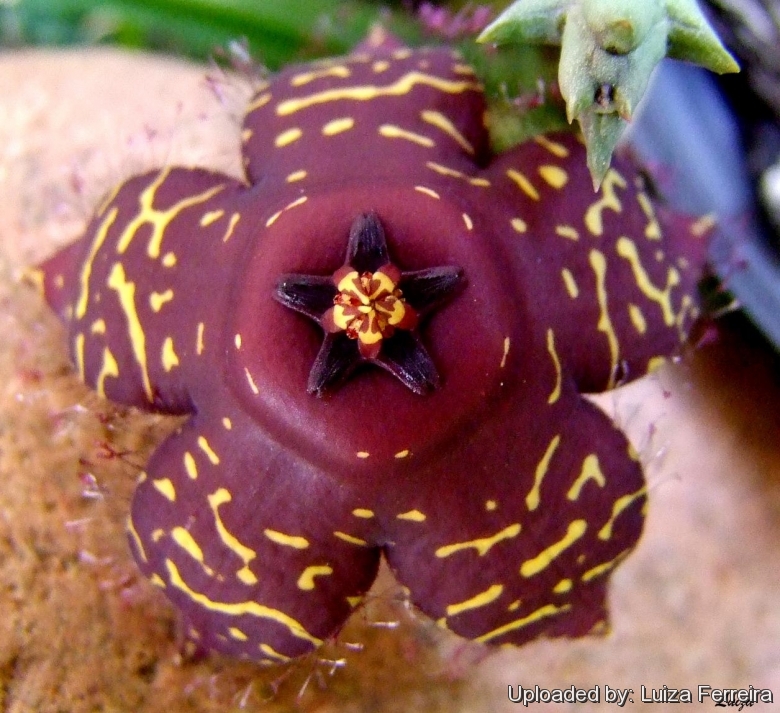
Orbea doldii Photo by: Luiza Ferreira
Origin and Habitat: Umtata district, Eastern Cape Province (Transkei. , Wild Coast), South Africa.
Type Locality: Buntingville, Umtata district.
Habita and ecology: Orbea doldiiSN|23708]]SN|23708]] grows on exposed dolerite dome along drainage lines. It is common but localised.
Synonyms:
See all synonyms of Orbea macloughlinii
back
Accepted name in llifle Database:Orbea macloughlinii (I.Verd.) L.C.LeachKirkia 10(1): 291. 1975Synonymy: 5
back
Description: Orbea doldiiSN|23706]]SN|23708]] is a succulent, leafless perennial with noteworthy flowers to 5 cm across, the corolla is purple with bright yellow marking, and vibratile hairs along margins. The stems, stem teeth, inflorescence, pedicels, sepals, corolla, size, outer and inner corona characters are very closely with those of Orbea macloughliniiSN|23704]]SN|23704]] that grows in the same area where O. doldii was found. Only the different patterned corolla, the more marginal cilia on corolla lobe and a shallower saucer shaped annulus distinguish O. doldii from Orbea macloughliniiSN|23704]]SN|23704]]. However in O. macloughlinii the annulus varies from flat to raised well above the corolla (like in in the related Orbea speciosaSN|23708]]SN|23706]]), so the shallow annulus of O. doldii can also be accepted as within the normal range of variation of O. macloughlinii. Corolla markings can vary in the same species and can't be used as a differentiating character.
Subspecies, varieties, forms and cultivars of plants belonging to the Orbea macloughlinii group
 Orbea doldii Plowes: has purple flowers with bright yellow marking, more vibratile hairs along margins and a shallower saucer shaped annulus. Distribution: Umtata district, Eastern Cape Province
Orbea doldii Plowes: has purple flowers with bright yellow marking, more vibratile hairs along margins and a shallower saucer shaped annulus. Distribution: Umtata district, Eastern Cape Province- Orbea macloughlinii (I.Verd.) L.C.Leach
 Orbea speciosa L.C.Leach: has yellow flowers mottled dark maroon with a shallow to prominent annulus. The petal edge carry numerous vibratile hairs. Distribution: KwaZulu-Natal,valleys of the Umkomaas Rivers.
Orbea speciosa L.C.Leach: has yellow flowers mottled dark maroon with a shallow to prominent annulus. The petal edge carry numerous vibratile hairs. Distribution: KwaZulu-Natal,valleys of the Umkomaas Rivers.
Bibliography: Major references and further lectures
1) Plowes, D.C.H. 2002. "Orbea doldii Plowes-a striking new stapeliad from South Africa." Asklepios 86: 8-10.
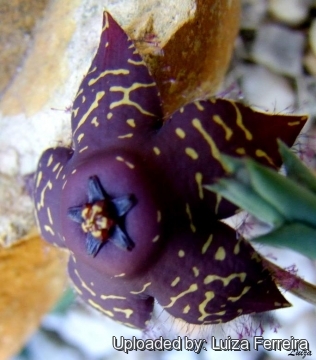 Orbea doldii Photo by: Luiza Ferreira
Orbea doldii Photo by: Luiza Ferreira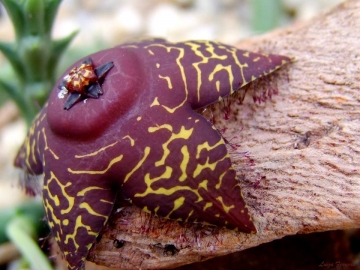 Orbea doldii Photo by: Luiza Ferreira
Orbea doldii Photo by: Luiza Ferreira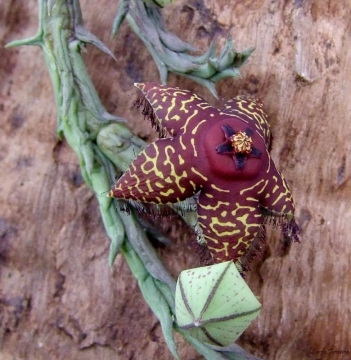 Orbea doldii Photo by: Luiza Ferreira
Orbea doldii Photo by: Luiza Ferreira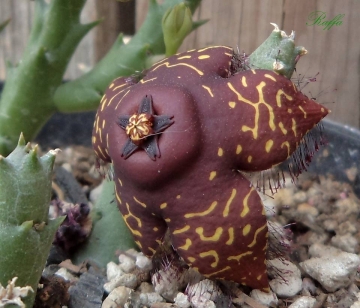 Orbea doldii Photo by: Raffa C. Garcia
Orbea doldii Photo by: Raffa C. GarciaCultivation and Propagation: Orbea doldiiSN|23708]]SN|23708]] grow well in light gritty soil with a very liberal drainage. They should at all times sparingly watered (best rain water with some occasional fertiliser), and in winter time they hardly require any. They require outdoor culture, or a warm close greenhouse, while growing in the early part of summer, and afterwards may be ripened and kept in a greenhouse; but as they bloom chiefly in autumn, warmth is desirable to enable them to expand their flowers.
A minimum winter temperature of 5-10°C is acceptable, providing that plants are kept absolutely dry. They prefer light shade rather than full sun, although stems may not colour up under shady conditions.
Propagation: Plants are usually increased by cuttings, which, as they are very succulent, should be allowed to dry a week after they are taken off, when they may at once be put singly into pots.
Pest & diseases: Keep their roots free of mealy bugs, as fungal attack often occurs as a result of damage to stems by insects. A layer of grit on the surface of the compost prevents moisture from accumulating around the base of the stems and minimise the chance of fungal attack on the roots.
Traditional uses: This species is sporadically collected for food by local people.















